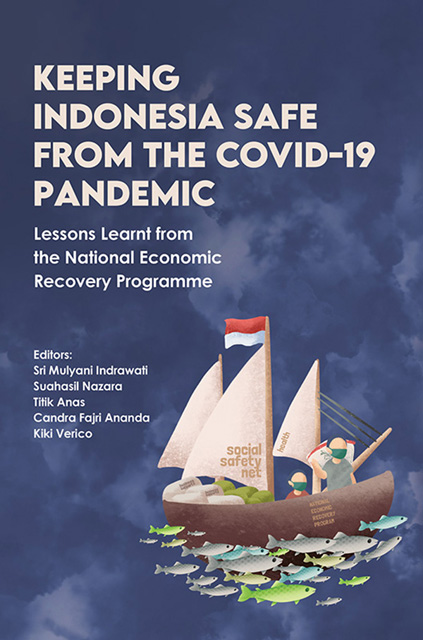 Keeping Indonesia Safe from the COVID-19 Pandemic
Keeping Indonesia Safe from the COVID-19 Pandemic Published online by Cambridge University Press: 30 June 2023
THE CURRENT TREND OF MENTAL ILLNESS
Global Trend
Globally, mental illness has been recognized as a less addressed disease while having a large economic impact (Chong et al. 2016; Steel et al. 2014; United Nations, Department of Economic and Social Affairs 2022). It is estimated that globally, in 2010, the productivity loss due to anxiety and depression amounted to US$1 trillion per year, while mental health in general resulted in losses as high as US$2.5 trillion per year due to poor health and productivity losses, and that number is projected to increase to US$6 trillion by 2030 (Lancet Global Health 2020).
As a type of mental illness, depressive disorders were among the leading causes of years lived in disability (YLD) counts in 2017, and mental disorders, in general, shared more than 14 per cent of age-standardized YLDs during the last thirty years. The prevalence of mental disorders is higher than 10 per cent in all twenty-one Global Burden of Disease (GBD) regions (e.g., Southeast Asia, East Asia, and Oceania) (James et al. 2018; Moran et al. 2012).
Looking at figures taken from the Institute for Health Metrics and Evaluation (IHME) website (Institute for Health Metrics and Evaluation 2019), mental disorders have increased in rank in terms of Disability Adjusted Life Years (DALYs) from number 13 in 1990 to number 7 in 2019 (Figure 10.1), potentially showing a substantial increase in severity and the number of diseases. However, in terms of Years Lived in Disability (YLD), mental disorders consistently sat at the 2nd rank in both 1990 and 2019, showing a potentially similar trend over the 29 years (Figure 10.2).
As an example of the burden of mental illness, studies have shown that psychotic disorders are associated with both health and nonhealthcare costs. However, it is less known that the non-healthcare costs component such as productivity loss (Knapp and Wong 2020) has a large share (more than 50 per cent of the total cost). Such a trend is shown by various studies in different countries such as China, Australia, Japan, England, Ireland, Spain, Belgium, Korea, the United States of America and Canada (Sado et al. 2013; Mangalore and Knapp 2007; Phanthunane et al. 2012; Charrier, Chevreul, and Durand-Zaleski 2013; SANE Australia 2002; Fasseeh et al. 2018; Zhai et al. 2013).
To save this book to your Kindle, first ensure no-reply@cambridge.org is added to your Approved Personal Document E-mail List under your Personal Document Settings on the Manage Your Content and Devices page of your Amazon account. Then enter the ‘name’ part of your Kindle email address below. Find out more about saving to your Kindle.
Note you can select to save to either the @free.kindle.com or @kindle.com variations. ‘@free.kindle.com’ emails are free but can only be saved to your device when it is connected to wi-fi. ‘@kindle.com’ emails can be delivered even when you are not connected to wi-fi, but note that service fees apply.
Find out more about the Kindle Personal Document Service.
To save content items to your account, please confirm that you agree to abide by our usage policies. If this is the first time you use this feature, you will be asked to authorise Cambridge Core to connect with your account. Find out more about saving content to Dropbox.
To save content items to your account, please confirm that you agree to abide by our usage policies. If this is the first time you use this feature, you will be asked to authorise Cambridge Core to connect with your account. Find out more about saving content to Google Drive.